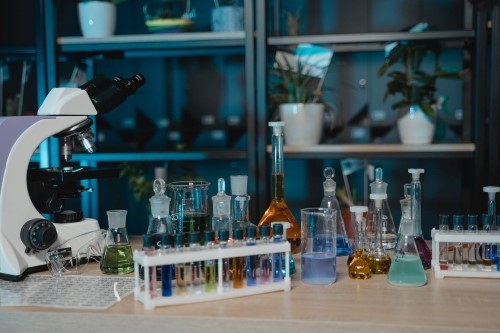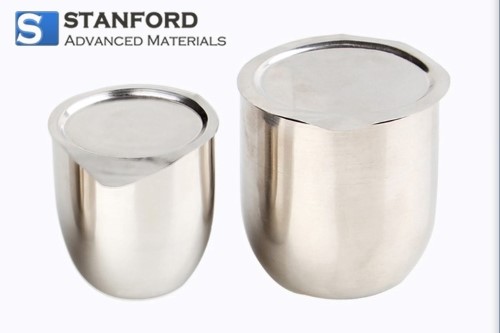Case Study: Standard Platinum Crucible For Precision Research And Laboratory Applications
Introduction
In research and in laboratories a variety of crucibles are used, each designed for specific applications. The Standard Platinum Crucible is one option among these vessels. It is manufactured from high‐purity platinum and is used in several scientific tasks due to its defined properties. In this article we explain why and how this component is used in laboratories.

Figure 1. Laboratory apparatus
Understanding the Standard Platinum Crucible
A standard platinum crucible is a specialised laboratory vessel used in various research and laboratory applications. Platinum is noted for its chemical stability, high melting point (approximately 1 768 °C) and low reactivity with most chemicals. Consequently, platinum is chosen for crucible production, particularly when handling corrosive or reactive substances.

Figure 2. Platinum crucibles
Applications of Standard Platinum Crucibles in Research and Laboratories
Platinum crucibles are used in numerous processes in research and laboratory settings. Their properties allow for controlled heating and processing in a range of applications, as outlined below:
-Analytical Applications
Platinum crucibles are primarily used in analytical chemistry for measurements and sample preparation. They are employed for heating, melting or calcining samples, given that they minimise contamination.
These crucibles provide accurate results in procedures such as:
XRF Sample Preparation: In X-ray fluorescence (XRF) analysis, the composition of a material is determined by measuring emitted X-rays. Platinum crucibles are used for sample preparation to minimise contamination and maintain sample integrity.
Ash Testing: For ash testing, the ash content of a sample is determined, typically in organic or mineral materials. Platinum crucibles are used to heat the sample so that organic matter combusts and an inorganic residue is left for analysis.
Wet Chemistry: In wet chemistry experiments, platinum crucibles are used for various chemical reactions and sample preparations. Their chemical inertness helps ensure that analyses and reactions are not adversely affected.
LOI Analyses (Loss on Ignition): LOI analyses determine the content of volatile components in a material. Platinum crucibles are used to heat the sample at defined temperatures so that volatile substances are expelled, thereby allowing weight loss to be quantified.
-Other Laboratory Uses
High-temperature Reactions: Platinum crucibles are used for high-temperature reactions, for example in melting processes during RFA analysis or for sample digestion in analytical chemistry. They are also used in thermal analysis procedures such as Differential Scanning Calorimetry (DSC) and Thermogravimetric Analysis (TGA).
Metallurgy and Materials Science: In metallurgy and materials science, these crucibles are used to determine the composition, melting points and other properties of various materials. They are utilised in experiments assessing alloys, ceramics and other high-temperature materials.
Precious Metal Analysis: Platinum crucibles are employed in the analysis of precious metals such as gold, silver and platinum. Their use minimises the risk of contamination during analysis and helps maintain result accuracy.
Sample Preparation: Platinum crucibles are used in sample preparation for chemical and pharmaceutical research where precise measurements and minimal contamination are required.
Melting and Fluxing: In geological research and analysis, platinum crucibles are used for melting rock and mineral samples with flux, thereby preparing them for subsequent analysis.
Conclusion
In conclusion, standard platinum crucibles are essential tools in research and laboratories, given that they withstand high temperatures and corrosive substances. They are used in various scientific disciplines, including analytical chemistry, high-temperature reactions and precious metal analysis. Stanford Advanced Materials is a supplier of standard platinum crucibles. For further information please visit our homepage.

 Bars
Bars
 Beads & Spheres
Beads & Spheres
 Bolts & Nuts
Bolts & Nuts
 Crucibles
Crucibles
 Discs
Discs
 Fibers & Fabrics
Fibers & Fabrics
 Films
Films
 Flake
Flake
 Foams
Foams
 Foil
Foil
 Granules
Granules
 Honeycombs
Honeycombs
 Ink
Ink
 Laminate
Laminate
 Lumps
Lumps
 Meshes
Meshes
 Metallised Film
Metallised Film
 Plate
Plate
 Powders
Powders
 Rod
Rod
 Sheets
Sheets
 Single Crystals
Single Crystals
 Sputtering Target
Sputtering Target
 Tubes
Tubes
 Washer
Washer
 Wires
Wires
 Converters & Calculators
Converters & Calculators
 Chin Trento
Chin Trento



